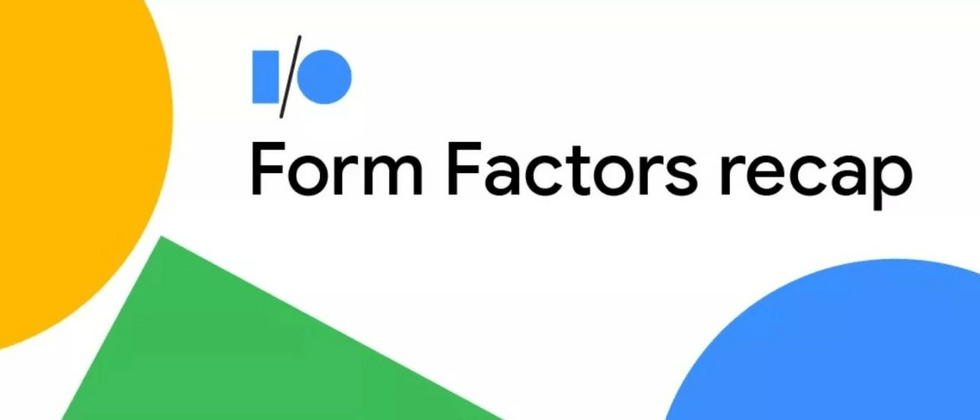Author/Android Team
In this year's Google the I / O conference, we discussed how to adapt your application for Android devices various screen sizes . If you missed the conference live broadcast, you can learn about the most important content through this article, or check seamlessly build a cross-device experience | Google I/O Conference Highlights Review Video Understanding
Tablet devices, foldable devices and large screen devices
When designing an application, it on 160d97a834626c large-screen devices (including tablet devices, foldable devices, and Chrome OS laptops). There are already more than 250 million large-screen Android devices in use. At the same time, the new foldable device also allows users to more easily handle multiple tasks, and created a new experience of desktop mode without the need to hold. See the example of Disney+ using desktop mode on Samsung Galaxy Z Fold2.
△ Example of using Disney+ in desktop mode on Samsung Galaxy Z Fold2
Fortunately, designing applications that can seamlessly scale to fit any device size has also become easier-including dynamic resizing on Chrome OS and foldable devices, and using Jetpack Compose or ConstraintLayout to build responsive layout . We have also studied how users interact with large-screen devices, such as where their fingers are placed on the screen, and provide you with APIs and tools to simplify this type of interactive experience:
- SlidingPaneLayout 1.2.0 can help you automatically adjust the content size to fit more space;
- vertical navigation bar provides a more ergonomic experience on the big screen;
- Constraint Layout 2.1 and MotionLayout help to update folding and transition states;
- The maximum width on the component can avoid bad UI stretching problems during operation;
- Jetpack WindowManager allows you to easily use new hardware features such as hinges and folding.
We also Android platform , Chrome OS and Jetpack WindowManager to optimize the application running experience by default. For example, many UI elements now have a default maximum width value to ensure that their presentation on large screens is more beautiful, and improvements to the Display API can ensure that existing applications can continue to display even if they do not use WindowManager to query window indicators. Rendered correctly on foldable devices.
You can watch the speech video below to learn more about the details of this Google I/O to help you build for large-screen devices:
- Foldable devices, tablets and large screens at a glance
- 5 tips for preparing your application for the big screen
- Chrome OS input items
- Optimize your Android games and apps to run on Chrome OS
For more details, you can check our previous tweet " foldable devices, tablet devices and large-screen devices update list ", or view the case study on Google Duo increased engagement and improved score
Wear OS
We released the Wear platform so far the biggest update, which contains new features, APIs and tools to help developers create beautiful, high-quality wearable experience.
Our new Jetpack API can help you simplify development. Jetpack card library allows users to quickly access the information they need most, as well as provide the expected operational interaction . Another noteworthy addition is the Ongoing Activities API , which enables you to allow users to navigate elsewhere (to start some other tasks, such as music playback) before returning to your app. Both libraries are currently in Alpha stage.
We also released a new set of health and fitness APIs that act as an intermediary for sensors and related algorithms on the device to provide applications with high-quality data related to activity, exercise, and health. health service platform Alpha version is now open to use.
Download Android Studio Arctic Fox Beta try the new Wear system image developer preview and start preparing your application for the new platform. You can view the video of this Google I/O speech below to learn more about the relevant announcements:
You can also check our previous tweet " see I/O together | Wear update list " for more details, and you can also learn how Spotify builds on Wear through the presentation video.
Android TV
At this year's I/O conference, we released several new tools and new features to simplify the development of the Android TV operating system:
- Cast Connect with Stream Transfer to support existing audio and video streaming between projection devices, while Stream Expansion supports simultaneous audio playback on multiple devices.
- We are now launching the first Google TV emulator and Android TV emulator together, both of which run on Android 11.
- Firebase Test Lab is about to add Android TV support so that you can test your apps on hundreds of virtual devices in the cloud. The physical device will be launched soon.
- Android 12 Beta 1 version for TVs on ADT-3.
These updates make it easier for you to build and test apps in a range of device configurations, while bringing the latest Android 12, Google Assistant, and Cast features to the TV. For more details, please watch the Android TV and Google TV update overview lecture video I/O Conference.
Android for Cars
Android Auto supports applications to connect to the infotainment displays built into many modern cars. To simplify the operation, we recently included the Android for Cars application library into Jetpack . The library supports navigation, electric vehicle charging and parking applications directly integrated with compatible cars.
We plan to expand it to more application categories in the future, so if you are interested in introducing your application to Android Auto, please fill in this intention form , or visit the official document to start using the Android for Cars application immediately Library. Android for Cars update list presentation video at the I/O Conference, or read the blog for more details.



**粗体** _斜体_ [链接](http://example.com) `代码` - 列表 > 引用。你还可以使用@来通知其他用户。